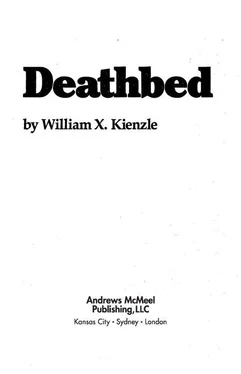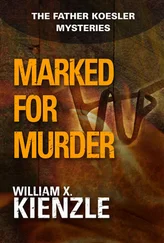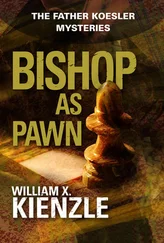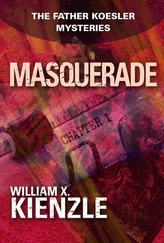* * *
Mrs. Walker’s statement was taken. And, as Koznicki suggested, it was a relatively simple matter to summon George Snell from his bed, which he had entered only a short time previously after finishing his tour of night duty.
Koznicki had set up temporary headquarters in an empty room adjacent to Dolly’s office. Thus, one room removed from Sister Eileen’s office, he was in the hospital’s central location. The Inspector was indeed determined to get to the bottom of this, and quickly.
George Snell was interrogated in the presence of Father Koesler and Snell’s supervisor. On his way back to the hospital, Snell had pondered how he would respond. He knew of Inspector Koznicki and understood the futility of any attempt to fool the Inspector. Snell decided that he would answer all direct questions truthfully. But he would not expand on any answers he gave nor would he volunteer any information.
The questioning quite promptly got down to the night Bruce Whitaker claimed to have been in the process of altering Millie Power’s medical chart when he was briefly interrupted by a security guard. According to the log for that evening, the guard had to have been Snell or no one. Either it was Snell, or Whitaker had invented the story.
Snell remembered the incident clearly. Yes, there had been someone in the nurses’ station who seemed not to belong there. Yes, he had challenged the man.
Why had Snell not followed up on his verbal and long-distance challenge? Snell weighed that one momentarily. He was not particularly adept at extemporaneous lying. He knew that. All in all, he considered the truth would serve best here. And, after all, he had determined to be truthful.
Yes, he had been distracted by someone. No, not a nurse; a nurse’s aide. Honest to God it had not been his idea in the first place.
It took a while before Snell was able to convince Koznicki—and even longer to convince the supervisor—that this impromptu roll in the hay had been the aide’s idea. Yes, they had used the empty bed in Alice Walker’s room. Snell had thought she was out of it. At least the aide had assured him the patient wouldn’t know what was going on.
No, Snell had not heard the patient choking. The aide heard it. Well, no, he hadn’t exactly fallen out of bed. He had been attempting . . . well . . . maybe it would be just as accurate to say he had fallen out of bed. And yes, the rest of it happened about the way Mrs. Walker had recounted it.
In fact, that’s why Snell had been convinced the aide was right about the patient’s not knowing what was going on. Mrs. Walker had not contradicted any of their story about how Snell had just been passing by when he heard her choking and had performed the—he still had difficulty with the term—yes, the Heimlich Maneuver.
Now, the essential question: Was the man Snell had challenged Bruce Whitaker?
Snell studied the mug shots Koznicki offered. The four photos were equally divided between Whitaker with and without toupee.
“Yeah, that’s the guy.” Snell tapped the pictures of Whitaker covered. But, even more startling, he recognized Whitaker sans toupee as one of the two performers on the television channel Snell had assumed was porno cable. That was the bastard who had successfully executed the one and only Snell Maneuver! For that occasion, Whitaker had been wearing nothing, including his rug.
However, Snell kept this latter information to himself. At this point, he did not care what else Whitaker had done or what the police had charged him with. As far as Snell was concerned, Whitaker’s sin that cried to heaven for vengeance was his carrying off the Snell Maneuver without a license. Or impersonating George Snell during the execution of the Snell Maneuver. Or something like that.
No, Snell told Koznicki nothing about the TV caper. No volunteered information. Besides, this was a matter of honor, a score that must be settled privately between the two of them. As near as Snell could figure it, this matter had the same sort of enormity as when one man stole another man’s horse in the Old West.
After advising him to remain available for further questioning, Koznicki dismissed both Snell and his supervisor. The Inspector then summoned the detectives who had been interrogating hospital personnel. Father Koesler’s observations having lent credence to Whitaker’s claims, Koznicki had called in several detectives from the Third Precinct as well as three from Squad Seven of his own homicide division. Lieutenant Ned Harris of Homicide was coordinating the investigation and now reported to Koznicki.
Once again, Harris made no attempt to mask his distaste at having to check out leads from this priest—the perennial amateur. However, to be fair—and when it came to police work Harris was nothing if not objective—Koesler’s leads had checked out.
There had been a shipment of curtain hooks that had been mutilated. And, according to the housekeeping department, the manufacturer remained adamant that no one in his company would have done such a thing. The manufacturer insisted there had been nothing wrong with the hooks on shipment. Whatever was done to them had to have been done after receipt by the hospital. At that point, the matter had remained inexplicable. No one could guess why anyone would mutilate curtain hooks.
One mystery apparently solved.
Everyone on the second floor remembered very clearly the mix-up of Millie Power’s chart. A mix-up that, had it not been caught, could have cost her life. As a matter of fact, by direct and insistent order of the CEO, an intense in-house investigation was even now being conducted to determine how and why that chart had been altered.
Another mystery apparently solved.
Koesler of course had been certain that the police investigation would bear out his eyewitness observations. So, while Lieutenant Harris was, item by item, filling Koznicki in on what the detectives had uncovered, Koesler was off in his own world of speculation.
In his mind’s eye, he saw Sister Eileen being wheeled into the operating room on a gurney. He assumed that her head would have been shaved for the operation. She would be completely helpless. In Koesler’s scenario—the only one that made sense to him—the carrier wheel had broken away earlier than was planned. Whoever had tampered with the carrier and the gas tank must have intended for the wheel to give way during the operation. It made no sense to Koesler that the wheel was intended to come off the cart before the operation.
Thus, the way the plan must have been conceived, the nitrogen tank would be delivered to the operating table. Then, during the operation, as doctors and nurses moved about the table, the tank would be jostled frequently. Not too much of that sort of bumping would be needed before the weakened wheel would collapse, tearing the valve from the tank and, in the ensuing turmoil, the neurosurgeon would inadvertently drive the drill into Sister’s brain. And that, finally, would be that.
Then Koesler tried to reverse the movie in his mind. He tried to visualize the person who would do such a thing. Who might actually plot Sister Eileen’s murder?
He had several candidates. Four, to be exact.
First to come to mind was Ethel Laidlaw. First, because she was least likely. And least likely because she was such a klutz herself. It was ludicrous to imagine that Ethel might follow behind Whitaker to correct his mistakes. To mix a metaphor, it would be a case of the blind leading the blind.
But, wait a minute! Whitaker’s first name was Bruce. And that was the name Ethel had mentioned as her new boyfriend and possible spouse. It must be the same person. With that relationship in mind, mightn’t she be the one who conclusively altered the chart and programmed the nitrogen tank?
Читать дальше












